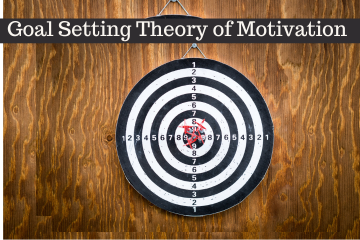Last Updated on 1 year by studentliveinfo
The Goal-Setting Theory of Motivation is a well-established paradigm that explains how setting precise, hard goals can encourage individuals to reach higher levels of performance and productivity. It was developed by psychologist Edwin Locke and his colleagues. According to this hypothesis, setting and attaining goals can boost motivation, contentment, and overall success. The essential components and principles of the Goal-Setting Theory of Motivation are as follows:
Clear and Specific Goals: The theory emphasizes the importance of setting clear, specific, and well-defined goals. Vague or general goals are less motivating because they lack clarity and direction. Specific goals provide a clear target for individuals to work toward. Clear and specific goals are a fundamental concept within the Goal-Setting Theory of Motivation. They refer to goals that are well-defined, and precise, and leave no room for ambiguity.
Well-defined objectives: Clear and specific goals provide a detailed description of what is to be achieved. They answer the questions of “what,” “why,” and “how.” Individuals should have a clear understanding of the goal’s purpose, what is expected of them, and the steps required to accomplish it. etting clear and specific goals is a crucial step in motivating oneself or a team to work toward a desired outcome. These goals provide a roadmap for success, making it easier to stay on track and achieve meaningful results.
Clarity of Focus: Specific goals help individuals concentrate their efforts and attention on a particular task or outcome. With a clear goal in mind, individuals are less likely to be distracted by unrelated activities or objectives. Challenging goals provide a clear target and a sense of purpose. They help individuals concentrate their efforts and prioritize tasks that are directly related to achieving the goal.

Challenging Goals: Goals should be challenging but attainable. Setting goals that are too easy may not inspire individuals to put in extra effort, while goals that are too difficult may lead to frustration and demotivation. The right level of challenge encourages individuals to stretch their capabilities.
Goal Commitment: Individuals are more likely to be motivated when they are committed to their goals. Commitment is influenced by factors such as the individual’s belief in their ability to achieve the goal (self-efficacy) and the importance they attach to the goal. Individual employees should have goals that align with their team’s goals and, by extension, with the organizational goals. This alignment ensures that everyone’s efforts are moving in the same direction.
Feedback and Monitoring: Frequent feedback on progress toward the goal is essential for motivation. It allows individuals to assess their performance, make necessary adjustments, and stay on track. Feedback helps individuals understand whether they are moving closer to their goals or need to modify their strategies.
Task Complexity: The impact of goal setting on motivation can vary depending on the complexity of the task. For simpler tasks, clear and challenging goals tend to be more effective. However, for more complex tasks, setting sub-goals or breaking the main goal into smaller, manageable steps may be beneficial. Task complexity refers to the degree of intricacy, sophistication, and difficulty associated with a specific job or activity. It involves multiple dimensions, and understanding task complexity is essential in various fields, including psychology, management, and human factors engineering. The level of task complexity can significantly impact performance, decision-making, and resource allocation.
Rewards and Incentives: Achieving goals often comes with intrinsic rewards, such as a sense of accomplishment and personal satisfaction. However, external rewards, such as bonuses or recognition, can also motivate individuals to work toward their goals, especially in organizational settings.
Goal Alignment: Goals should be aligned with an individual’s values, interests, and long-term objectives. When goals are in harmony with a person’s intrinsic motivations and values, they are more likely to be pursued with enthusiasm and dedication. Goal alignment is a management and organizational concept that refers to the process of ensuring that the goals and objectives of individuals, teams, and departments within an organization are in harmony and aligned with the overarching goals and strategic objectives of the organization as a whole.
The key idea behind goal alignment is to create a clear and cohesive framework that guides the efforts of all members of an organization towards a common purpose.Goals and strategies may need to evolve over time due to changing market conditions, customer preferences, or other factors. Organizations should be flexible and willing to adjust their goals and strategies as needed while maintaining alignment. Determine who within the group will be responsible for specific tasks and activities related to achieving the goals. Clearly defined roles and responsibilities prevent confusion and overlap.

Regular Progress Monitoring:
Implement a system for tracking and monitoring progress towards the group’s goals. Regular check-ins or meetings can help group members assess their progress, identify challenges, and make necessary adjustments. It is crucial for goal setting for any work.
Goal Setting in Groups: The theory can also be applied to group settings. When teams or organizations set clear and challenging collective goals, it can promote collaboration, coordination, and a shared sense of purpose among members. Goal setting in groups, also known as group goal setting, is a process by which individuals within a team or organization collaborate to establish shared objectives and targets that are aligned with the overall mission and purpose of the group. Setting goals in a group setting can enhance teamwork, improve motivation, and increase the likelihood of achieving desired outcomes.
Time Frame: Setting a deadline or time frame for achieving a goal setting can create a sense of urgency and focus. Short-term and long-term goals can coexist, with short-term goals contributing to progress toward larger, long-term objectives. A “time frame” refers to a specific period or duration within which something is expected to happen, occur, or be completed. Time frames are commonly used in various contexts, such as project management, goal setting, financial planning, and scheduling, to provide a clear sense of when a particular event or task is supposed to take place.
Competitive Advantage: In organizational or competitive settings, striving for challenging goals can provide a competitive advantage. It can set individuals or teams apart from others who may be pursuing less ambitious objectives. Competitive advantage refers to the unique attributes or strengths that allow a business or organization to outperform its competitors and achieve superior performance in the marketplace.
It represents the factors or strategies that set a company apart from others and give it a distinct edge in terms of market positioning, profitability, and customer value. Competitive advantage can take various forms and can be derived from a combination of factors.




0 Comments